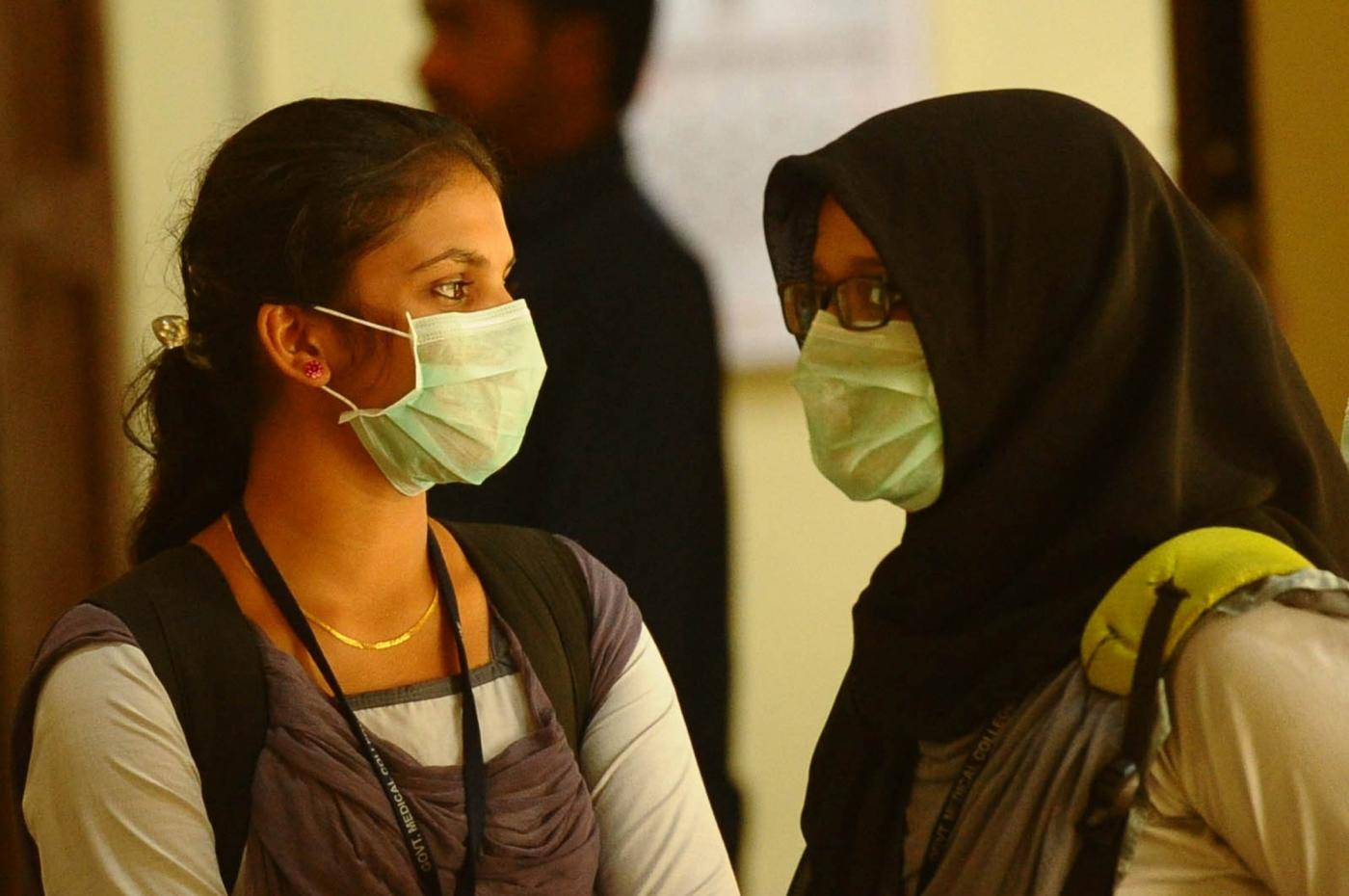South Indian state of Kerala won acclaims all over the world for successfully controlling deadly Nipah virus outbreak. Dr.Asma Rahim, currently heads the Department of Community Medicine , Government Medical College, Manjeri, Kerala, writes about the state’s resilience to Tame Nipah

I hail from Kozhikode city in Kerala, South India, dubbed the ‘City of Spices’ in ancient history. It was trembled under the onslaught of the lethal NIPAH Virus in the month of May 2018. We Kozhikodans are a peace loving community and has been ranked as the second best city in India to reside in with a high happiness quotient. On May 13th , citizens woke up to the report of a mysterious illness killing people rapidly. As news of more deaths suspected to be NIPAH –a deadly viral illness started pouring in, the plot seemed directly out of the 2011 US medical thriller “Contagion”.
Here is the chronology of casualties inflicted by NIPAH in Kozhikode. A 26-year-old young male gets admitted with symptoms of acute encephalitis on May 5th at a government tertiary facility and dies on the same day, followed by the death of his younger sibling a week later. Paternal aunt and their 62-year-old father, closely follow suit. Death of a discrete contact with similar symptoms was also reported with fever, cold, encephalitis and myocarditis.

We had to confront head on, one deadly virus known to have inflicted a mortality rate of more than 70 per cent in diseases reported around the world. The team of doctors in a private sector hospital who suspected the disease in the second case needs to be lauded for their clinical acumen. If it had not been for their meticulous patient history which connected the second case to the death in the family and critical thinking, it would have taken a few more weeks to nail NIPAH. With no prior experience, health system in the district was left grappling with a disease which left 16 out of the 18 tested positive dead.
 Our panic grew leaps and bounds as days progressed and deaths continued. With half-informed social media messages about Nipah started doing rounds, it was tough to distinguish fact from fiction. This was an emerging disease necessitating a knee jerk response. Health professionals plunged into the academic pool of literature to collect facts on NIPAH. To start with the virus is named after the Malaysian village where it was first discovered, “Sungai Nipah.”
Our panic grew leaps and bounds as days progressed and deaths continued. With half-informed social media messages about Nipah started doing rounds, it was tough to distinguish fact from fiction. This was an emerging disease necessitating a knee jerk response. Health professionals plunged into the academic pool of literature to collect facts on NIPAH. To start with the virus is named after the Malaysian village where it was first discovered, “Sungai Nipah.”
A deadly outbreak in 1998 is linked to the tripling of pig and mango production in Malaysia in the 1970’s and 1990’s resulting from the thrust on intensive agriculture to boost economy. Mango trees were planted with fervour around pig farms. Trees thrived on pig manure. Innocent fruit bats of the family Pteropodidae were delighted as they fed and roosted in these trees, migrating from the nearby caves. But nature had its own plans to introduce a deadly virus to the livestock through these gentle, intelligent creatures who were fortunate enough to survive the disease, in spite of being a host.
Since the Malaysian outbreak, Nipah virus seems to have established itself in South Asia from 1998-2018 starting from Malaysia, Singapore spreading to Bangladesh, West Bengal and the latest being Kerala. It has wreaked havoc in the areas hit resulting in 60% chance of the affected dying. Kozhikode outbreak witnessed a case fatality rate of more than 85%. Unlike their counterparts in Malaysia, the Bangladesh and Kozhikode virus decided to be independent, choosing no amplification host and hit the humans directly .

The fruit bats in Bangladesh enjoy feasting on date palm sap used to make products like molasses, used as a sweetener in traditional cakes and desserts, and often consumed raw. In India, the bats feed on seasonal fruits like mangoes, jack fruit, guava, Litchi and even plantain sap. While feeding merrily, infected bats may contaminate the fruits with its urine or saliva .Probably people who collect fruits from these trees may be infected too. In the Kozhikode outbreak, investigators are still searching in the dark about chain of bat to man transmission.
All cases in Kozhikode outbreak were transmitted person-to-person, among family members, caregivers, health care workers and hospital contacts of the first reported case similar to the Siliguri (West Bengal) Nipah outbreak in 2001. People from the neighbouring district of Malappuram were affected too.
After exposure and an incubation period of 5 to 14 days, illness presented with fever and headache, followed by drowsiness, disorientation and mental confusion progressing to coma within 24-48 hours. Some patients had respiratory illness during the early part of their infections, and half of the patients showing severe neurological signs showed also pulmonary signs. However how long the infected patient can infect others is not clear to us, though patients are highly infective towards the terminal stages of the illness .
In the 2018 outbreak, only two survived, a male and a female .We hope that these survivors escape the reported long-term sequelae following Nipah virus infection including persistent convulsions and personality changes and subsequent reactivation of Nipah months and even years after exposure. Outbeak came to a halt in the first week of June ,a month after terrorising two districts and an entire state .
Social ostracisation in the wake of NIPAH :
Families of victims were totally cut off with the outside world, with no one around to comfort them in the loss. Several Nipah affected families have complained of being isolated as people apparently fear contracting the rare virus. Staff at the local hospital who treated the patients and whose colleague died complained of being marginalised. They were not allowed to travel in buses and auto-rickshaws refused to take them to their workplace. Most of the families adjacent to the victims home left the place adding to the grim feeling lurking in the air. Public fear and overreaction to outbreaks of deadly diseases is one of the biggest challenges faced in the aftermath of this outbreak.
Public health response:

Though our lives were never the same again mourning for the souls lost every day and the fear of contracting the disease, the brisk state response soothed our concerns. WHO, was alerted. As health professionals we joined the army of warriors to fight the outbreak and contain it quickly before it could become an outbreak. Disease transmission was halted by intensive contact tracing, surveillance and Quarantine of more than 2000 suspected contacts of the patients for a period of 21 days spread across two districts . Food kits were provided by the state to those families under quarantine .Nailing NIPAH required multi-sectoral collaboration to tide over a health crisis.
Intensive care units were geared up, drugs were procured from Japan and Australia. Team of epidemiologists and specialists from the centre camped at the outbreak site to soothe the concerns of the Public and carry out epidemic investigations and develop protocols for management. By May 24, the state health ministry could issue a media release stating that “the Nipah virus disease is not a major outbreak and only a local occurrence.”
As for the health care sector having insufficient supply of PPE nor the ability to use it properly, NIPAH outbreak was a lesson in itself. This painful incident was a stark reminder to ensure safe clinical practices, especially at healthcare centres/ hospitals that are dealing with infectious diseases.
What next?
The Nipah virus outbreak has prompted the Coalition for Epidemic Preparedness Innovations (CEPI), a global alliance of governments and non-profits, to step up efforts to find a cure for the deadly disease with $25 million earmarked over the next five years to US pharma .With the outbreak well contained and arrested for now ,what troubles health experts in Kerala is the lack of clarity on the manner in which the virus came to the state. India needs to tweak her public health policy on eradication of endemic and emerging zoonotic diseases by replacing the pathogen-centric approach urgently with a holistic human-animal-environment approach (One health approach). It is also essential to run public education campaigns to raise awareness about Nipah virus, especially in tropical forest areas where bats are found in abundance.

If you live in a region which is on an alert due to NiV, you can help yourselves in the following ways:
- Animal-to-human transmission prevention
- Do not consume date palm sap as the chances of it being contaminated are very high. Fruit bats are very likely to visit the date palm trees and lick the sap.
- Domestic animals can also be the carriers of NiV as fruit bats often drop partially eaten fruits which can be consumed by them. Try to keep them indoors and feed them yourself or if there’s a chance of them being infected, keep distance from them and get them treated.
- Don’t climb trees where bats may have left their saliva or secretions.
- Epidemiological surveys have yet suggested that human-to-human transmission of NiV is not very common. However, it is possible to get infected with NiV if one gets in touch with the secretions of infected patients.

Dr.Asma Rahim currently heads the Department of Community Medicine , Government Medical College,Manjeri ,Kerala.She graduated from KMC,Mangalore (1993)and completed Masters degree in Community Medicine &DNB from Government Medical College,Kozhikode 1999.She has authored a text book’Principles and Practice of Community Medicine”,2nd edition by Jaypee Brothers Publishers. Recipient of the APLAR best paper award at Hongkong(2011) and Calicut Medical Journal(2010 ) .Principal Investigator of the ICMR Project on Chikungunya and a member of the GBD Musculoskeletal group. With a FAIMER fellowship in medical education ,she is keen on implementing Competency based medical education in Indian medical schools and has been Instrumental in setting the Skills and Simulation lab at Govt Medical College ,Kozhikode .








